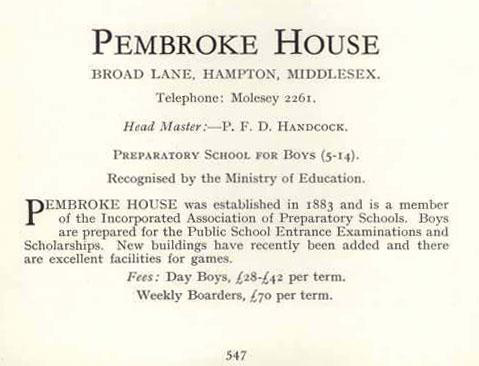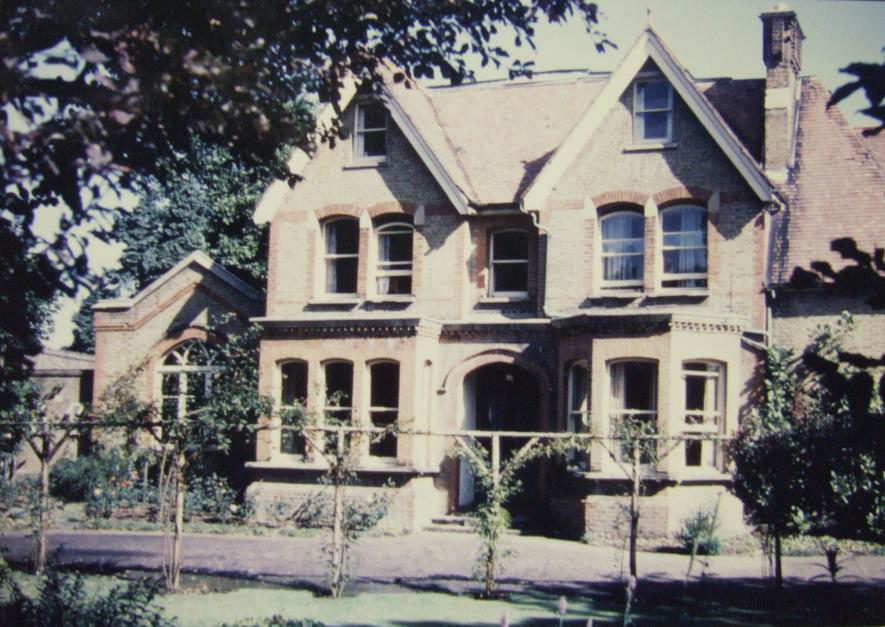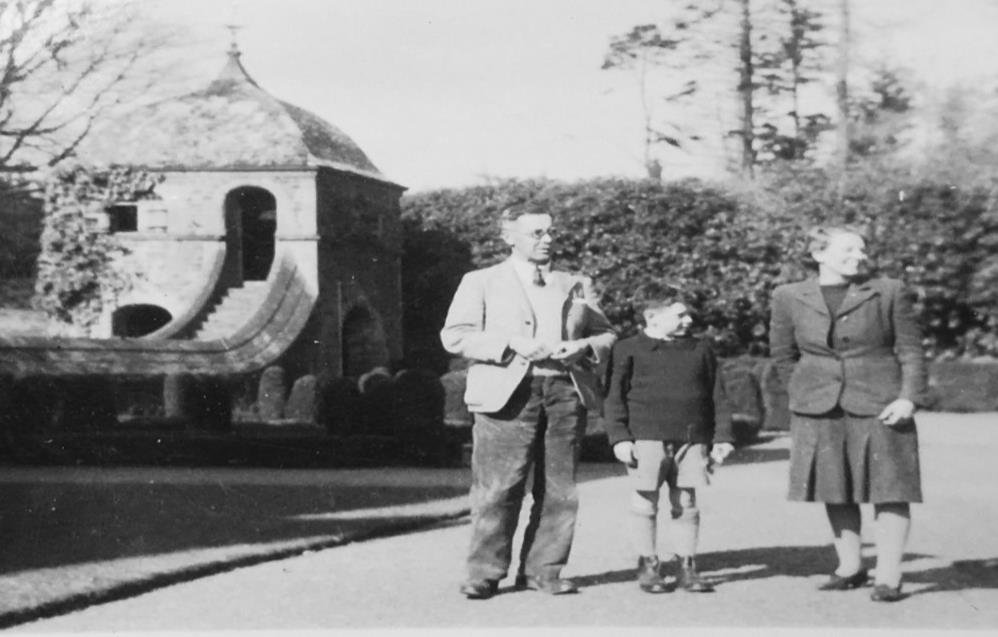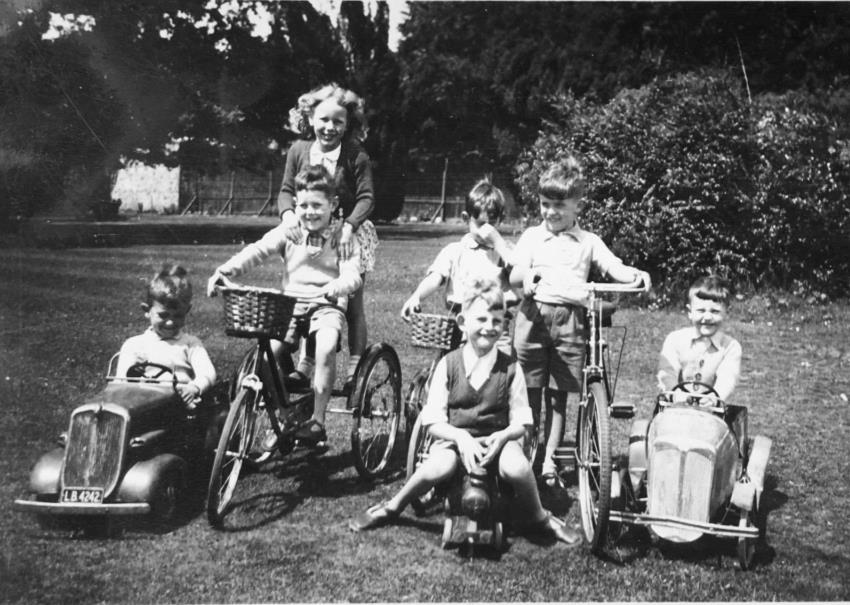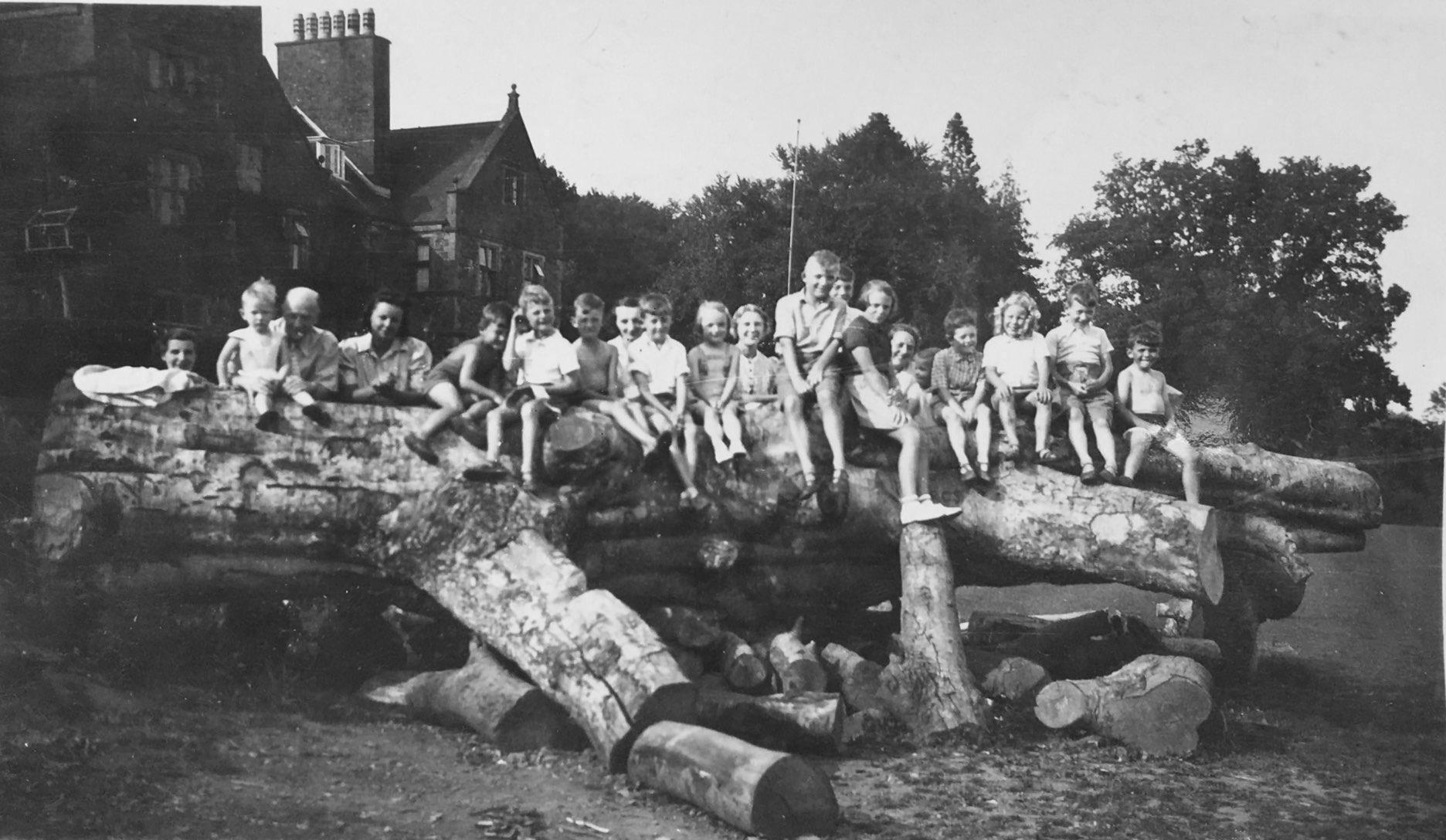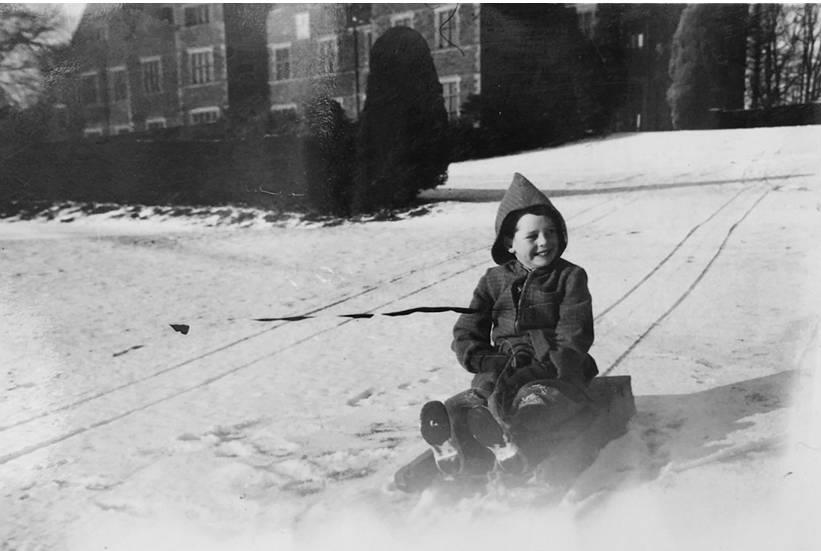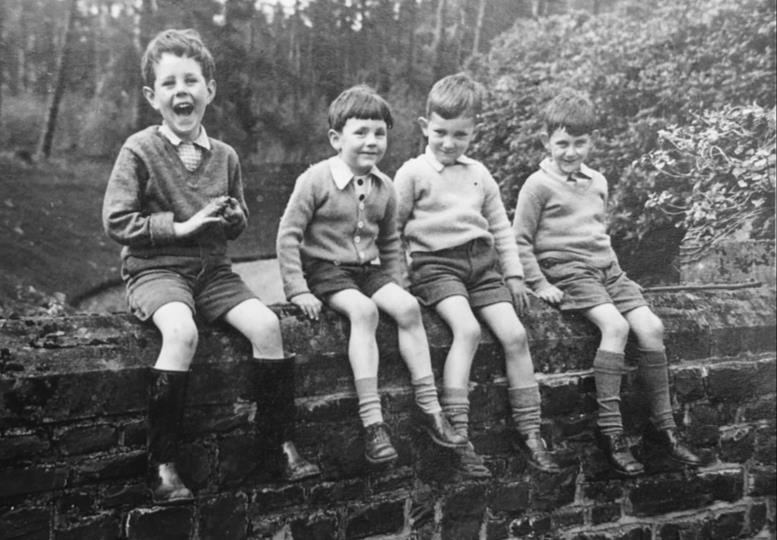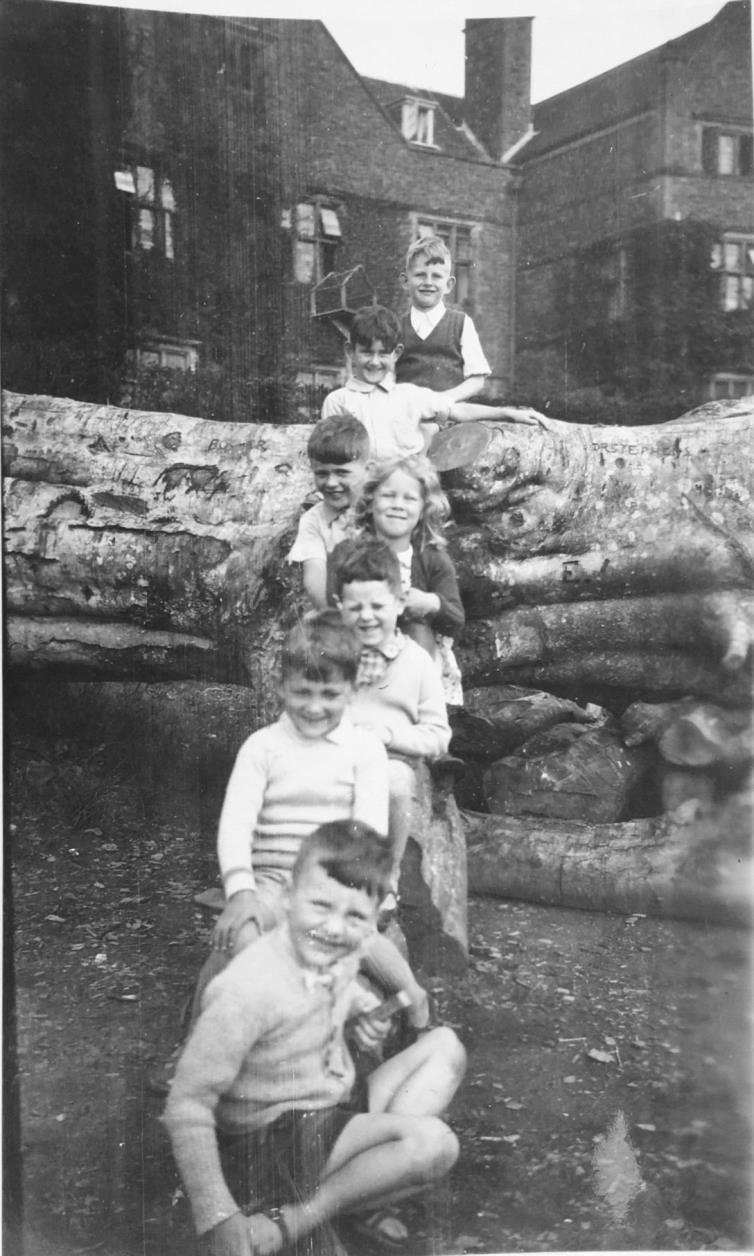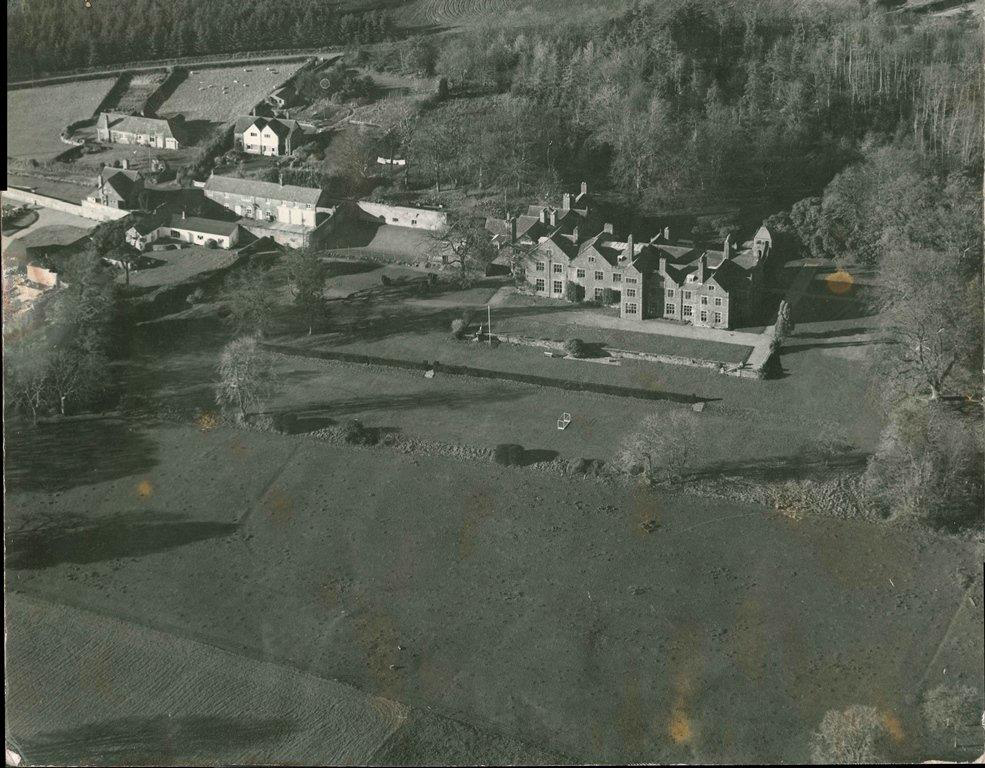Relocated to Ravenswood School, 1939 – 1945
There is much information available about evacuee children during the early stages of World War 2 where many tens of thousands of children were relocated from areas of Britain considered to be at great risk. Similarly many Boarding Schools from these areas were also relocated ‘for the duration’ and Pembroke House School was one. As the advert from ‘Patons Guide to Schools’ states, the school was founded back in 1883, and it survived until 1966. The School was started by a Mr J F Ellis in Broad Lane, Hampton, Middlesex. There is little history of the school to be had on line and the image of the school took a considerable amount of digging around to discover. All Old Ravenswoodians, regardless of age or sex, are fortunate to have the extensive information on their former school available at www.ravenswoodschool.co.uk as many schools, particularly those that have fallen by the wayside neither maintain a Website nor even an Old Boys Association. St. Aubyns Tiverton and Norwood School in Exeter spring to mind, both of which Ravenswood competed with in a variety of sports over many decades. Hopefully this and other information recently put together will enhance and elaborate on the historical information already on our Website.
At the time that Pembroke House School relocated to Stoodleigh Mr Paul Campbell Phipps MBE (Military 1919) was the headmaster. He was twice wounded in WW1 and served in North Russia. My article on Mr Huyshe mentions the connection between Huyshe and Phipps being that they were both at Keble College, Oxford. Maybe it is because of this connection that in Mid September 1939 some 30 plus pupils arrived in a Clatworthy’s of Tiverton motor coach one dark evening at Ravenswood School (probably two motor coaches as they were a much smaller capacity in those days1 …rmh) together with accompanying Staff. The boys were bundled into Scott and Waverley dormitories and awoke to the ritual of washing at the wash stands. Further details of this new life and regime are recalled in the “I Remember” chapter. I find it ironic that one of the major contributors to “What happened at Ravenswood during the War” was Richard Mackie, later to become Ravenswood’s Headmaster. He was one of the 30 plus pupils from Pembroke House that merged with the forty or so ‘Original & Genuine’ Ravenswood Pupils and remained there for the duration of the war. Mr Phipps came with his wife Flora and as Mr Spark was called up for further military service throughout the war, the school was effectively run by Mr Huyshe, Mr Phipps and Flora Phipps. My information is that Mr Huyshe was an extremely busy Headmaster and there were many demands on his time. He had no secretary or bursar and even the groundsman was only part time, he undoubtedly benefitted for Flora Phipps’ assistance and expertise who took over on the domestic side and, between 1940 & 1945, Matron’s duties. Three teachers named as coming with the Pembroke Contingent were Miss King, Miss Keen and a Mr Handcock, though he later was called up and served in Italy, returning on demob to Pembroke House. He took over as Headmaster with ‘Dick’ Phipps (Paul Phipps’s brother) on the death of Paul and Flora and also carried on after ‘Dick’ Phipps had left and, it is believed, remained Headmaster until he sold out and Pembroke House ceased in 1966, the school buildings are no more. Paul Campbell Phipps died in Majorca on the 1st September 1956. He and his school had a significant and long lasting influence on Ravenswood’s history, well beyond ‘The Duration’ which in itself lasted for six years.
In Richard Mackies’ eyes at the time “the staff seemed very old or very young; the young ones being soon called up and there were mostly ladies left on the staff as teachers and matrons.” Much of the information about Mr and Mrs Phipps and the period that Pembroke House School were at Ravenswood comes from their son Robin Phipps and he has been a stalwart contributor of memories and incidents and, most thankfully, a few of which I have included in this article. One should remember that for Robin Phipps this was ‘home’ week in week out living there for 6 years, with up to 35 boys and their sisters in the holidays as well as termtime. Eventually, later in the war, it was deemed safe for them to go home in the holidays. No doubt with so much time available he was able to, and did, explore the school most thoroughly (probably from attic to cellars) and in far greater depth and detail that the run-ofthe-mill scholar and probably knows more about the building’s secrets than most1 He is pictured (left) in the familiar surroundings of the Dovecote with his parents on either side of him.
As I have indicated, Robin Phipps’s contact with me has produce a wealth of information, much of it previously never put into print, his contact with me came completely out of the blue. It would seem appropriate to reproduce much of the content of his emails (and the images he sent) in the next few pages and I have reproduced most of what he had to say below
“I lived at Ravenswood where all Pembroke House boys integrated with Ravenswood. Looking back it was an idyllic part of the world for a youngster. I have a few very informal photos of small groups from 1939 – 1945 which I am sending you with explanatory text. A few of those boys went on to Pembroke House at the end of the War. Unfortunately I have no full school photos and must admit I cannot remember any being taken during the war. Six years’ memories are difficult to condense: Mid winter being cut off by snow: Petrol rationing also making it almost impossible to communicate with the outside world, unless in the case of serious sickness, injury. Tiverton Doctor, Dr. Lowe, the school Doctor, patched me up on a number of occasions. On one occasion stitched me up with 10 stitches. Toothache had to wait for the weekly car to Tiverton. Local hedge cutter doubled up for the school Hairdresser.” The smaller picture is a snap from Wartime School Holidays and the snow scene reminds Robin that they were completely cut off for ten days, not helped by petrol rationing, but, as seen, great for the boys – out with the toboggans !
Again from the emails:- “I remember very few of Ravenswood names. Michael Skinner who was born about 1930 and went on to Sherborne where he was 1st XL for Cricket and Mills, born about 1931.” The (next page ..rmh) photograph features the wall that appears in so many photographs, especially in connection the Hunt Meet that was held at the school on numerous occasions. I can only reproduce what Robin put in his email and that is to name them from left to right:- Robin Phipps, Bobby Tivvy, Seyce, (?) & Stocker (Because of the Wartime ‘Gap’ they are not in the list of names of those in Ravenswood School Photographs…..rmh) “No doubt that there was much excitement amongst the youngsters at the time surrounding the cutting down of these trees that were on the rear terrace and were deemed to be unsafe. Sawing them up did much to alleviate the fuel shortage situation I imagine. I seem to remember something said about stumps of trees into which many a name was carved in later years.”
